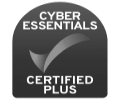
12 steps to stand out well on LinkedIn |
|
by David Dwyer on 15/05/2018 |
|
12 steps to building a stand-out profile on LinkedIn LinkedIn allows you to network with your clients and contacts, keep in touch with past colleagues, and connect with industry thought-leaders that you’ve never even met. It’s a powerful channel for professionals across many disciplines. LinkedIn is still focused primarily on professional services, but it offers individuals and relevant organisations an outstanding platform through which to build their reputation. But you should be careful in your approach to LinkedIn: professional reputations are built up over a lifelong career, but they can be tarnished irreparably with a single inappropriate comment – and everything you say or share on this platform can and will affect your professional reputation, which can also impact your career successes in the long run. Here are 12 things to shape your activity on LinkedIn to make a positive impact. 1) Remember LinkedIn is a network for professionals: Make sure that your profile picture is up-to-date and suitable. If you get a meeting with a prospective new contact, or an interview for your dream job, then the first thing they’re likely to do is check out your LinkedIn profile. If you subscribe to LinkedIn then you can see they’ve done this – but it’s not going to be a surprise if they do. So, what you don’t want is for them to look at your photograph and think, “I’m surprised they used that image”, or “Did they really post that comment”. What you want is for them to think: “this person looks professional, trustworthy, authentic and credible”. If you’re a party planner, then a photo at an event could be ideal, but if you’re not, don’t try to be too ‘individual’ or audacious with your photo. You want to be remembered for the right reason. 2) Do take care to shape a strong description of your experience: If your business has won awards for its service include that information right at the start. People will look at your details but they won’t read your life story. Keep the information brief, keep it focused and keep it accurate. Do not embellish – remember it’s best to under sell and over deliver than to over promise and underwhelm when they do work with you. That way they’ll provide the endorsement, and third party testimonials carry real weight. You should include your line of business, even in your personal profile, what it is that you do, what products or services your employer offers, and what makes it different from the competitors. 3) Keep it simple: LinkedIn is international and your network most likely will soon grow to include international contacts, and those working in other sectors. So try to minimise jargon and keep the language you use straightforward so that it is always clearly understood. Sticking to simpler words will encourage the broadest network to engage with your profile. 4) Do check your spelling: A professional who doesn’t know how to spell correctly in their CV looks unprofessional and slapdash. Your LinkedIn profile is the global CV for you and your business. Rather than rush something out and then be sorry for a poor impression, it’s always better to play it safe. Take the time to check your spelling before you post anything. 5) Do incorporate video posts: Just as on other social media channels, video is having an impact on LinkedIn. In 2018, video on LinkedIn generated more than 300 million impressions and created a threefold improvement on the impact of posts. But LinkedIn isn’t a sales platform, your network don’t want a hard sell, a persistent pitch or a blanket barrage of opinion. They will welcome useful research, personal experience, professional insight and valuable sector data. 6) Do choose your groups carefully: Group can be an excellent way to learn the latest trends in your industry and keep up-to-date with key influencers. But the greatest value comes from joining a few specific groups and building a profile within them, rather than spreading your time across a really broad number of groups with which you rarely interact. You should only post relevant responses to a discussion, and if you start a discussion of your own then allow time to monitor and respond to comments that come from other group members. 7) Do nurture your relationships: Whenever your contacts leave a personal update on their profile, like a post or a new role, post a positive comment or send them a private message of congratulations. These simple efforts can go a long way to creating a more personal professional relationship. But don’t respond to LinkedIn’s auto reminders of someone’s birthday or work anniversary. Most LinkedIn members find that intrusive, and it generally means they didn’t set their preference correctly, not that they actually want the world to know it’s their birthday. 8) Do respond promptly: If you choose to promote your business on this network – and you should, after all your competitors will be there (it’s free) – then it’s a professional courtesy to reply to comments or enquiries in good time. If you think your response might offend, keep that thought to yourself and instead take the time to craft a polite, professional and helpful response. LinkedIn is a public forum, not a private conversation. For the same reason, avoid being too critical in response to points in a group discussion. If you want to refute a point do it by referring to third-party facts, not dismissive opinions. 9) Don’t connect without researching first: Some connections can post comments that give other LinkedIn users the wrong impression about you or your business. Before you accept a connection on your profile, consider who the request has come from and try to determine if this association will be a positive one. 10) Don’t use the standard “Join my network” message: For that very reason, when you attempt to connect to another user, unless they will know you automatically as a colleague or recent business contact, always use a personal message when trying to connect. This will show them that you actually took the time to understand who they are and what their needs are. 11) Don’t post faulty links: If you’re posting a link on your profile, check it first by clicking the link yourself. Even broken links on your profile can adversely affect your image, and links to dodgy third-party pages will alienate your valuable connections. 12) Don’t allow your profile to be stagnant: As with all social media channels, you should have a plan of action before you set up your profile on LinkedIn. Keep to a strategic content model that builds your professional reputation. It’s better to post good content less frequently rather than post trivial content regularly. Now network! |
|
e-Marketing, Linkedin, Linkedin Networking, Social Media Management, Social Media Tools, Social Proof
|



















